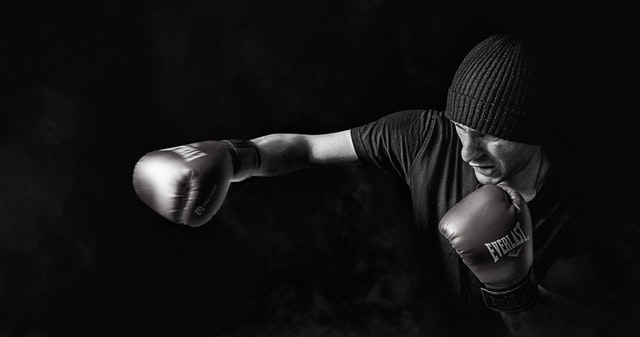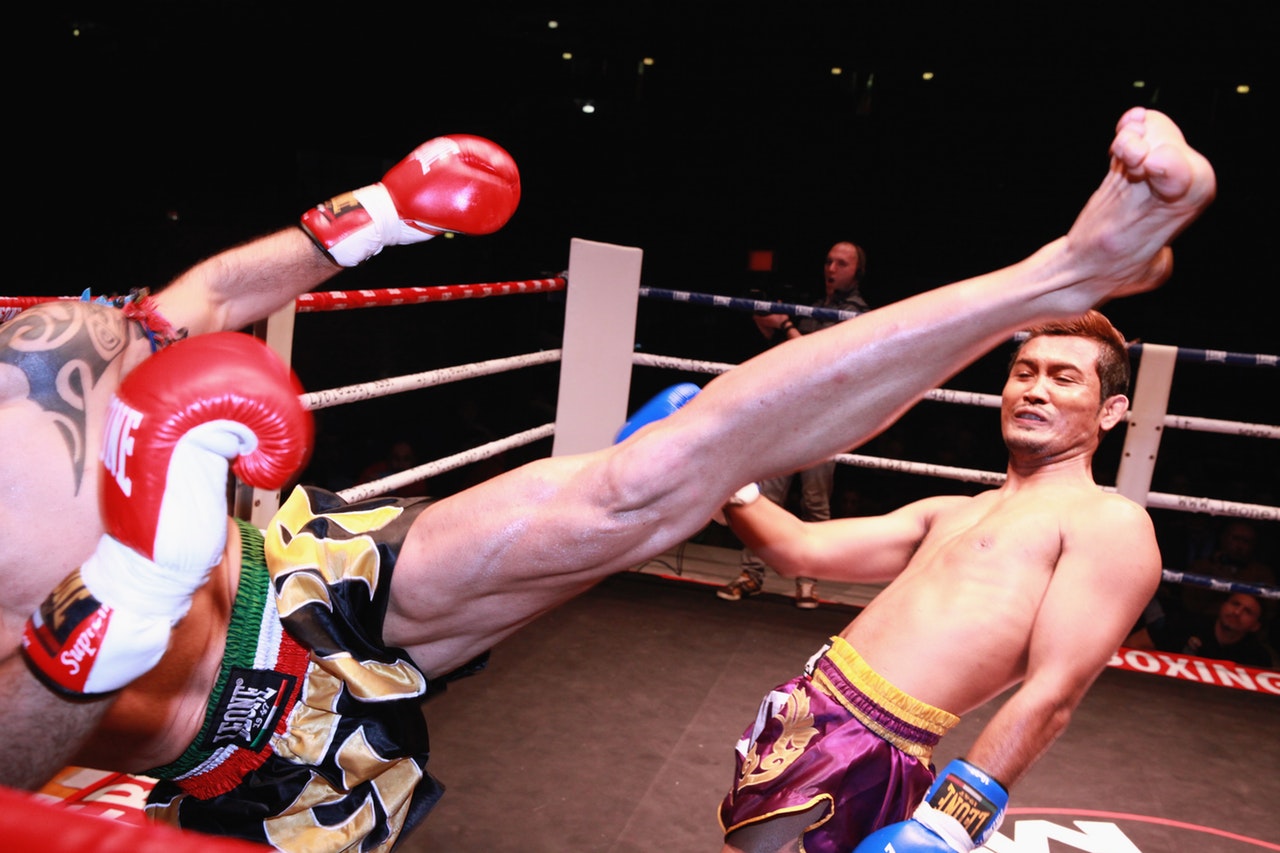Beginning any type of sport for the first time is not only challenging but a scary experience. Especially if you are getting into the martial arts, it’s not exactly a cake walk, a walk in the park or any other walk for that matter. However, taking that first step and putting yourself out there will definitely be beneficial in the long run, not only for your martial arts journey but also for yourself.
You can always ask questions, do searches, watch countless videos, however, you will only know how to learn Muay Thai after you’ve taken that step and tried it.
Just because you might be a complete newbie to it, it doesn’t mean that you won’t learn anything in the first few classes. There are several Muay Thai training techniques and beginner Muay Thai conditioning exercises that will have you improving your game right from the get-go.
Now, you can search all you want online for the best Muay Thai beginner tips, an article on Muay Thai gear for beginners, a Muay Thai basics pdf or Muay Thai training videos free download, however, on this guide, I have the best Muay Thai workout for beginners that you will ever need.
Before I get you the workout, however, I am going to make you work for it a little — but with helpful tips, of course! I think it’s important for us to cover all ground together and test the waters before jumping in.
After searching “Muay Thai near me“ and locating the nearest school or gym or pulling up all the Muay Thai training videos you’ve located and are ready to get started, you should know that before you get into a workout, students usually prepare for the rigorous training of Muay Thai.
A Muay Thai training routine if done incorrectly or without engaging the proper Muay Thai training techniques might get you injured. Therefore, the first few days of your training will be the most brutal but I’m about the share with you a few tips that can get you out of the hole early and mentally prepare you for what’s about to come.
These next nine tips are pieces of advice that are pretty basic but maybe aren’t addressed at your gym or school. However, try your best to implement them and do it early, before you get to take a beating.
|
Get your cardio in |
Running and getting your cardio going is one of the most effective parts of your routine that you should be doing on your own or implementing into working out so you are prepared endurance-wise. It will improve your overall performance, boost up your endurance and stamina, and will convert to lengthy benefits when you’re on the martial arts journey for the long haul. When you’re running, you should incorporate not only long-distance running but sprint interval training. If you haven’t started Muay Thai yet, before your first class, get some running in. If you have joint problems, you can also bike or swim to work your fitness level up. |
|
Invest in Proper Muay Thai Gloves |
Unlike the picture above, you should invest in some gloves that are effective and specifically designed for Muay Thai. Although you don’t have to break the bank to purchase them, you should really think about investing in them rather then getting cheap one and having to replace them after a short amount of time. These gloves, ultimately, should offer protection for your hands, enough padding, a firm, wrist support, and being a comfortable fit. Although it’s not really important, they should also be a design that you like —like it or not you’ll be with these gloves every time you train, so you have the opportunity, you might as well get ones that you like. Overall, you should also purchase gloves that are within your budget. |
|
Always Wrap Your Hands |
Even if you have already invested in gloves, you should wrap your hands prior. In Muay Thai, injuries to the hands or wrist aren’t uncommon and should be taken seriously. The beginners, more importantly, should recognized that their hands need time to condition to the sport. For example, you are literally going from never punching anything (except maybe a wall or two) to punching a couple hundred times repeatedly, a couple times a week. Beginners also tend to punch incorrectly, therefore wrapping your hands will not only give you protection and support, it’ll help teach you how to punch. Here is a video to help you learn how to properly wrap your hands: |
|
Form is Everything |
Another beneficial thing I like to tell beginners is that power isn’t everything. Although most students who first start out and who chose martial arts in the first place simply just want an outlet to hit things as hard as they can, it’s not the best way to go. First, you should work on your form and your technique before you implement power. When you’re working with equipment, like the heavy bag or speed bag, you should start slowly and then eventually get up to your maximum speed and power. There is another article I’ve written on proper form that you can look at when punching but just for a reiteration, make maximum contact on your first two knuckles, keeping your wrist as straight as possible. You should also realize this advice isn’t just limited to punching. It also implies kicking, as well. You will probably have bruises on your shin because it isn’t conditioned. Therefore, not only with time but with proper form will you evade pain as much as possible. |
|
Go One-on-One |
If you can spare time or a dime, getting private training lessons isn’t such a bad idea. Especially when you are first starting off, you develop habits and learn form. Learning and practicing bad habits will make it that much harder later on when you have to correct them. If 1-on-1 training is available, even just for one lesson —sign up. Talk to your instructor to see if they can’t arrange it, just to send you on the right direction with your technique. |
|
Take Your Rest |
Just like with any type of sport, training isn’t everything. Although you might by hyped on your new passion or just want to get better as quickly as possible, overtraining isn’t going to do it. Actually, training too much might cause you pain and more negative effects in the long run than an organized training schedule and rest. It is important to rest, especially if you have injuries. An injury can always be worked around, so don’t torture yourself because it’s the only thing you can do. Rest also signifies an adequate amount of sleep. Not only is this cycle vital for your health, it is also important for your recovery. The main thing here to do is to listen to your body. If you are hurting more than normal or are tired, you should take rest. |
|
Fuel Your Body |
Part of a training schedule is putting the fuel you need to exercise into your body.
Not eating properly, especially before your training can cause you to feel sluggish and cause low energy throughout the duration of the training—sometimes you won’t even be able to make it through the entire thing. During the training, if you haven’t eaten enough, you can actually feel nauseous, which you can imagine isn’t exactly the best feeling in the world. To properly fuel up, take in some carbs at least two hours before training so you have enough energy and then eat a snack half an hour before your training actually begins. After training fuel is also important. Your post-meal is literally your pre-meal before your next training, if you can imagine that. |
|
Keep yourself Hydrated |
Just like any other sport, hydration is just as important, if not, more important than fueling up with food. The body needs water and fluid to function, let alone perform anaerobic and very physical exercises. The physical strain and compromising positions that Muay Thai puts your body in will automatically de-hydrate you. Therefore, hydrating before, during, and after training, also, during he day is extremely important when training. Side note: This isn’t a “mind over matter” issue, at all. Physiologically speaking, your body needs to stay hydrated in order to function properly and get the most out of the training as possible. |
|
When in Doubt, Reach Out |
When you’re training, especially as a beginner, you will run into things that you are unsure of. Techniques that you have yet to really understand or ways to move around that you simply cannot do yet. Don’t let your shyness or hesitancy keep you from evolving. Ask students around you or ask the coach who is there with you. With whatever question you may have, it’s important that you reach out when you’re in doubt. Especially if you are doing a technique and you are feeling pain, it’s possible that you’re doing it incorrectly. Therefore, ask and you might not have to experience that type of pain anymore. |
Some of you out there, might not be financially stable enough or not have enough time in their schedule to attend a gym or school for Muay Thai. Therefore, learning at home beginner Muay Thai combos or training on your own through videos and whatever you can find isn’t the worst idea.
However, if you are training on your own, be aware that you might not have the techniques correct, especially when viewed over by an expert of the martial arts. Sometimes though, training at home is your only option, and that’s okay.
Not having the resources of a coach to be able to correct your mistakes, give you advice, and guide you through each training session is very helpful, especially at the beginning. But doing it at home can also be beneficial and give you the start you need to have fun and get in shape. Not only can you do it at home on your own in the comfort of your own living room or basement, you can also get together with friends and try your best to train techniques and movement.
Especially for beginners, I’ve put together some tips to help you train Muay Thai at home with a purpose. These tips include techniques for beginners that you’ll have to learn and know.
The main thing here is that you shouldn’t just be training blindly. Investing in a punching bag and then hitting the lights out of it all the time won’t get you better at Muay Thai — it will just give you bruised knuckles and a sprained wrist. training with a purpose is vital to Muay Thai and improving your martial arts skills.
Having a purpose doesn’t necessarily mean that you have to train to fight all the time. Going hard and using all forces of your power won’t get you anywhere but too tired to go on with training. Muay Thai fighters’ training is organized and focused, training a couple skills or techniques at a time and placing that concentration in getting better.
Having your muscles or mind fatigued during training won’t help concentrate on getting better at the points where you need improvement. A great first tip to realize is to go slow at first. No matter what technique you are learning, you should learn how to do it properly before you do it quickly.
For an example, as a baby, you didn’t learn immediately how to run. First, you learned how to pick your upper body off the floor, then you learned to shimmy, then to crawl, then to walk, then you could go faster and run. Learning Muay Thai is exactly like that. First, you learn the form and technique, then I can move on from there.
Here are some Muay Thai techniques for beginners to help you train.:
Shadow Boxing

This technique is where you see fighters moving about the gym or floor on their own accord, punching and dodging an invisible opponent. Although it might seem crazy at first, it is highly beneficial to your game.
How to Shadowbox:

I have an entire article on shadowboxing but I’ll give you a bit of advice here on the how-to, behind the scenes details.
First, take up your beginning stance and then move around controlled, keeping an eye on your invisible opponent. Once you keep them in line, you should add strikes, which means punches, knees, kicks, elbow strikes, etc., and move around as if you were fighting them. This means you should also incorporate evasive maneuvers where you are bobbing, weaving, and avoiding their counter-strike. When possible, also incorporate blocking.
With shadowboxing, you should also keep moving with footwork, whether it is linear, lateral or circular.
The whole point to shadowboxing is to work on your technique and putting combinations together. If you can do it on a film or have someone watch you, it is best so you can get ample amount of feedback. This should be the basis of your foundation of training before you move on to anything else.
If you need help with shadowboxing, here is a video:
Technique Drills

Now we get really into the technique. Although you are not exactly Muay Thai Sparring yet and have no need for Muay Thai sparring tips, these technique drills will help get you prepared.
Having a partner throw a combination at you will help you get into the rhythm of blocking and countering. When you’re doing this, you should always keep your technique as best as you can because it is preparing you for sparring.
Here are a few ways to train with Muay Thai:
Bag Work
Even if you are training at home, you can use a heavy bag. Although you might not want to invest in one, you can even make one yourself (or use a family member that has been having a bad mood lately—kidding, don’t do that).
On the heavy bag, you should strike it and always keep moving. Focus on your footwork, control, and keeping balance in between strikes and during them.
The bag will move on its own, so use that movement to control and learn to time your strikes. When it’s on the move towards you, strike it. When it’s moving away, change your stance up, move around, and work on your footwork.
With heavy bag work, focus on a specific technique that you need to work on. For example, for one round focus just on kicking, with another focus on elbow or knee strikes, and so on.
Once you really get moving, you can implement power and start to develop your strength. The great thing about the bag is that it doesn’t cry or whine when it’s hit hard. So, you can hit it as hard as you want —but after you gained proper technique!
The proper technique here can be developed and focused on because it simulates a real fighter in its movement. Just like you cannot control how another fighter reacts and moves, you cannot control the bag, either.
With this video, you can watch someone working with a heavy bag:
Thai Pad Work
This involves another partner, person, student or coach. It is best if you have someone who knows how to do it, however, your partner can always learn. They are responsible for holding the Thai pads up in various positions while you strike.
Your partner shouldn’t just be a standing tree, however, they should also block or counter a strike so that you have to be on your toes and maneuver around it, getting prepared for the counter—like a real fight.
This type of technical training works on your reaction to not only commands but movements from the person holding the pads.
Here is a video to help you get the idea behind it:
Muay Thai Sparring
This is also another technique training done with a partner in Muay Thai. Sparring is where you can simulate a fight without actually hurting yourself or your sparring partner. This is in a controlled manner and environment where you wear protection so you really are not injured.
A trainer should be watching close by to be able to teach both partners the right way to react and control their movements. Here is where you ultimately can put everything you practiced into play. Best done with partners of the same level, you can also work with others who have more experience than you.
Here is a video of sparring:
Focus Mitt Training
No, you did not read MIT training — there are no computers here. Mitt training is for a fighter to focus on punching combinations in a more concentrated area, focusing more on speed than the power that is used with pad training. The mitt holder, most likely a trainer has the ability to move around much more and therefore cause a quicker reaction for the fighter in training. With this technique training, you can vary up your strikes and aim them more towards the head or make them overall more versatile.
Mitt training is much less limited than pads because they are smaller and easier to move about. They also help the fighter work on hand speed, quick head movement, and overall combination throws.
Here is a video to help you see what mitt training is all about:
Clinching Sparring Training

Also taking place with a partner, this type of training has you on the ground and fighting for position. As a beginner, however, you should really be concentrating on foot placement and arm positioning. Getting the stronger position from your partner can really help you in this situation and learning how to do that is essential for growth in your Muay Thai training.
Since you are just a beginner, don’t look for the sweep at first. You should focus simply on positioning and learning what body part goes where.
Here is a great video of clinching sparring:
Here are a few workout examples that you can use on your own to be able to get the most out of your training. Since they are already in order, you can just follow them simply like they are written.
These are great examples of training workouts because they focus mainly on technique and learning proper form. As always, listening to your body is important — especially if you aren’t training with a coach’s supervision. If you have a partner, great, if you don’t that’s okay, too. You can still train as much as possible without an actual partner, just to stay in shape.
|
Training 1: Solo |
|
Warm Up and Dynamic Stretch to get the body moving. |
|
Shadowboxing for 3×5-minute rounds or as you can handle it. |
|
Bag work for 5×5-minute rounds or as you can handle it. |
|
Training 2: With a Partner |
|
Warm Up and Dynamic Stretch to get the body moving. |
|
Shadowboxing for 3×3-minute rounds or as you can handle it. |
|
Sparring for 3×3-minute rounds or as you can handle it. |
|
Bag work for 5×5-minute rounds or as you can handle it. |
|
Pad work for 3×5-minute rounds or as you can handle it. |
|
Clinching for 15-30 minutes or as you can handle it. |
|
Training 3: With a Partner |
|
Warm Up and Dynamic Stretch to get the body moving. |
|
Shadowboxing for 3×3-minute rounds or as you can handle it. |
|
Technique drills 3×3–minute rounds or as you can handle it. |
|
Boxing only sparring 3×3-minute rounds or as you can handle it. |
|
Pad work for 3×5-minute rounds or as you can handle it. |
|
Clinching for 10-20 minutes or as you can handle it. |
In general, beginning Muay Thai can be a scary thing. However, some last thoughts to keep in mind while you begin your martial arts journey are to stay safe and take things slowly. You won’t be the best of the best right at the beginning. Focus on the basic skills and form before you move on to the next big thing. As I mentioned before, developing a bad habit is very easy—undoing and re-learning it the right way is the difficult part. If you are serious about the sport, begin to watch fights and analyze what you learn. Most of all, have fun. You are just a beginner and learning the ins and outs of Muay Thai — make friends and do what you can.


